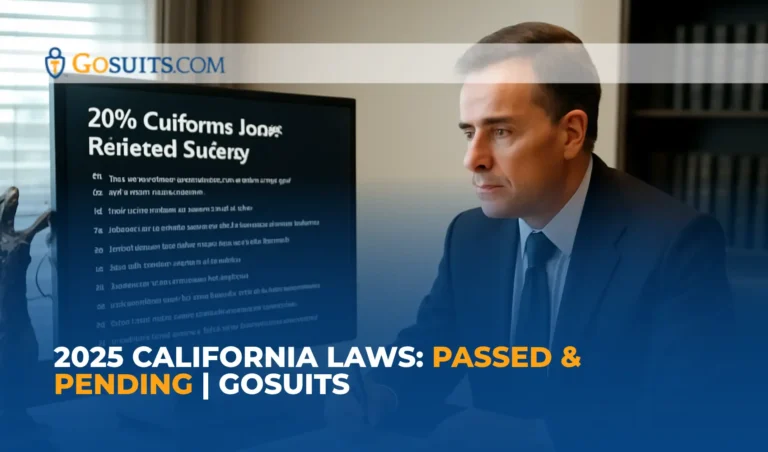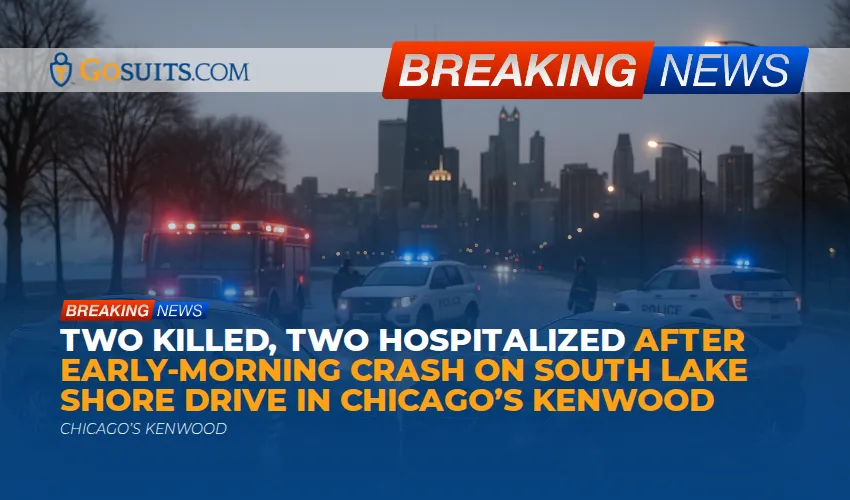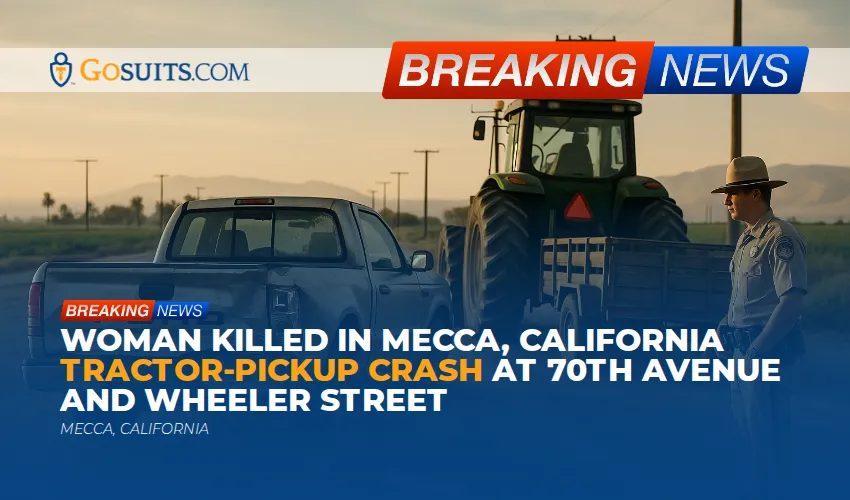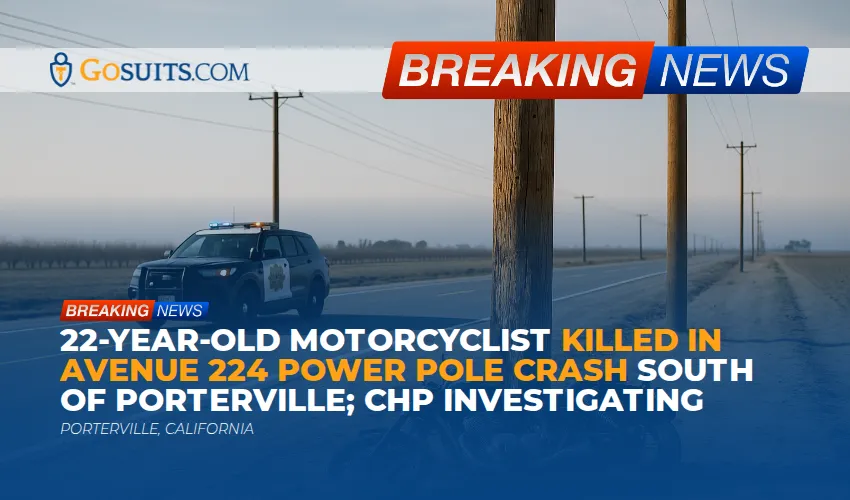- What 2025 California legislation is passed or pending that could affect injury, car crash, and wrongful death claims?
- How can you verify 2025 California bills and track their status yourself?
- Which traffic safety laws taking effect in 2025 might impact negligence cases in Los Angeles, San Diego, San Jose, and statewide?
- How do 2025 California laws affect auto insurance claims, negotiations, and civil litigation?
- What are the 2025 time limits to file California personal injury and wrongful death lawsuits?
- How do wrongful death and survival claims work in California in 2025, and who can sue?
- What do California DUI and street racing laws mean for civil liability in 2025?
- How are pedestrians, cyclists, and micromobility treated under California law in 2025?
- Are autonomous vehicles addressed by California law in 2025 and how could that affect a claim?
- How do California statutes and cases shape settlement strategy in 2025?
- What local differences across Southern California, the Bay Area, and the Central Valley could matter?
- How should defendants and insurers adapt to 2025 legal updates in California civil cases?
- What 2025 FAQs come up about evidence, damages, and California court procedure?
- How can GoSuits help with a 2025 California injury, car accident, or wrongful death case?
- Where can you read the primary sources for these 2025 California legal updates?
What 2025 California legislation is passed or pending that could affect injury, car crash, and wrongful death claims?
You asked about 2025 California legislation and how new California laws in 2025 could affect civil cases after car accidents, catastrophic injuries, or wrongful death. Below is a practical, attorney-style overview focused on how these legal updates might change liability, insurance claims, and litigation strategy for people in Los Angeles, San Diego, the Bay Area, the Inland Empire, the Central Valley, and across California.
Because bills evolve quickly, we cite only authoritative sources and distinguish between what is already enacted and what is still moving through the Legislature. If a bill is pending, the safest path is to verify the current text and status on the official California Legislative Information site at leginfo.legislature.ca.gov. We also point you to relevant California statutes, court rules, and agency regulations on .gov and official sites.
Highlights likely to matter in 2025 to California injury cases include:
- Speed safety camera pilot expansion timelines and related rules in major cities like Los Angeles and San Francisco under an already-enacted pilot, with the first citations expected to start appearing in 2025 in authorized jurisdictions. See the enacted speed safety systems pilot law in the California Statutes for the specific program details and start-up windows on the Legislature’s site (leginfo.legislature.ca.gov). This pilot concerns administrative enforcement and can create new forms of notice and data relevant in civil cases.
- Continuing updates on pedestrian safety, visibility, and roadway design initiatives at the state and local level, which can affect negligence standards, evidence, and duty of care analysis in collisions involving pedestrians and cyclists. California cities often align measures with the state Vehicle Code and local ordinances found on official municipal websites.
- Ongoing DMV regulatory updates for autonomous vehicles that define who must carry insurance, what operational rules exist, and how reporting works. California DMV’s AV program maintains testing and deployment regulations that are important for fault and evidence issues if an AV is involved (dmv.ca.gov).
In short, 2025 California legal updates continue to focus on traffic safety, technology, urban mobility, and accountability. The rest of this guide explains where the law stands today, how to verify what’s changed, and how the updates might affect plaintiffs and defendants in civil cases.
How can you verify 2025 California bills and track their status yourself?
To check what is actually passed or pending in 2025:
- Use the official Legislature portal at leginfo.legislature.ca.gov to search bills by year, bill number, author, or keyword such as “traffic safety,” “pedestrian,” “speed camera,” “wrongful death,” or “insurance.” Each bill page shows the bill text, amendments, status history, and votes from the Senate and Assembly.
- Read codified law by clicking the “California Law” tab on the same portal to view the current California Codes including the Code of Civil Procedure (limitations and procedure), Civil Code (damages, comparative fault statutes), Vehicle Code (traffic rules, DUI, racing), Government Code (government claim procedures), and Insurance Code.
- Check regulatory agencies for rules and forms:
- California DMV autonomous vehicle regulations and deployment permits: dmv.ca.gov
- Judicial Council of California court rules and resources: courts.ca.gov/rules
- Look up appellate cases that interpret statutes using public archives. CourtListener hosts free opinions and metadata for California and federal courts (courtlistener.com). For scholarly background, you can also search Google Scholar and filter results to include court opinions.
When you confirm that a bill has been chaptered, check its effective date and whether a sunset or pilot period applies. Many 2025 California laws that affect traffic enforcement include ramp-up periods before citations or data collection begin.
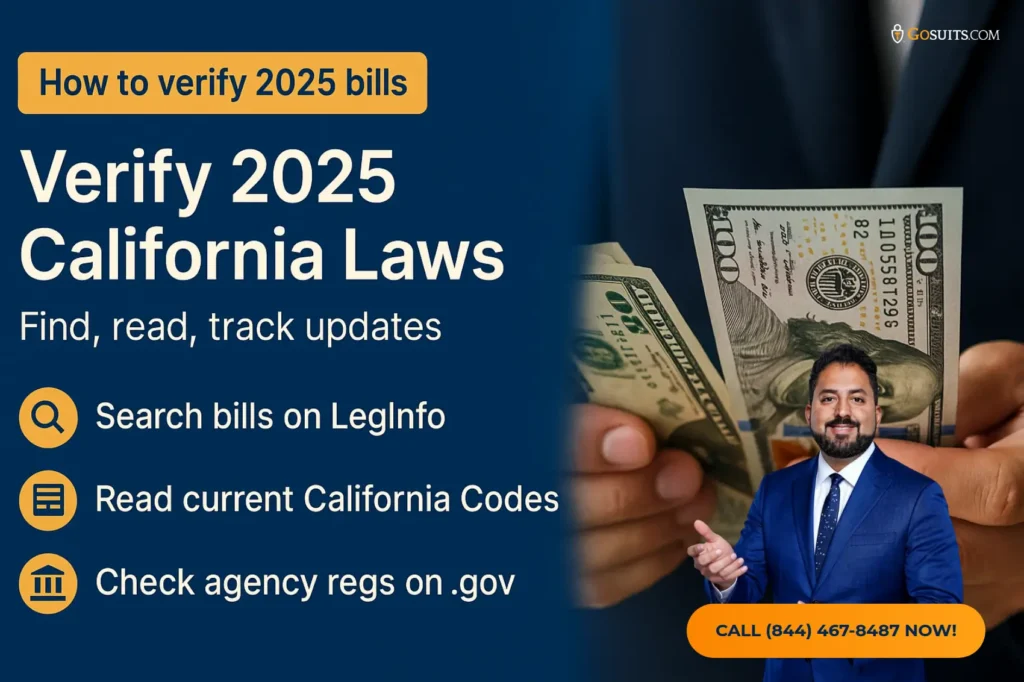
Which traffic safety laws taking effect in 2025 might impact negligence cases in Los Angeles, San Diego, San Jose, and statewide?
From an injury-law perspective, the most immediate 2025 developments involve enforcement methods that may generate new forms of evidence, such as speed safety systems authorized under an enacted pilot program. The Legislature’s pilot law permits certain cities to implement automated speed enforcement in defined corridors and school zones. Implementation steps continue into 2025. You can verify participating locations and timelines by consulting the enacted statute and the deploying city’s official website.
Why this matters to civil cases:
- Presumption and proof of speed: Administrative speed citations do not control civil liability, but the data can help establish a pattern of speeding, notice to a driver or fleet operator, and conditions at a location. California follows pure comparative negligence, so speed evidence can shift fault percentages for both sides.
- Roadway design and visibility: If a location is part of a pilot corridor, collision frequency, speed distributions, and before-and-after studies once published by agencies can be discoverable and relevant to duty and breach analysis against private defendants. Certain public entity design immunity defenses remain, but they are fact sensitive.
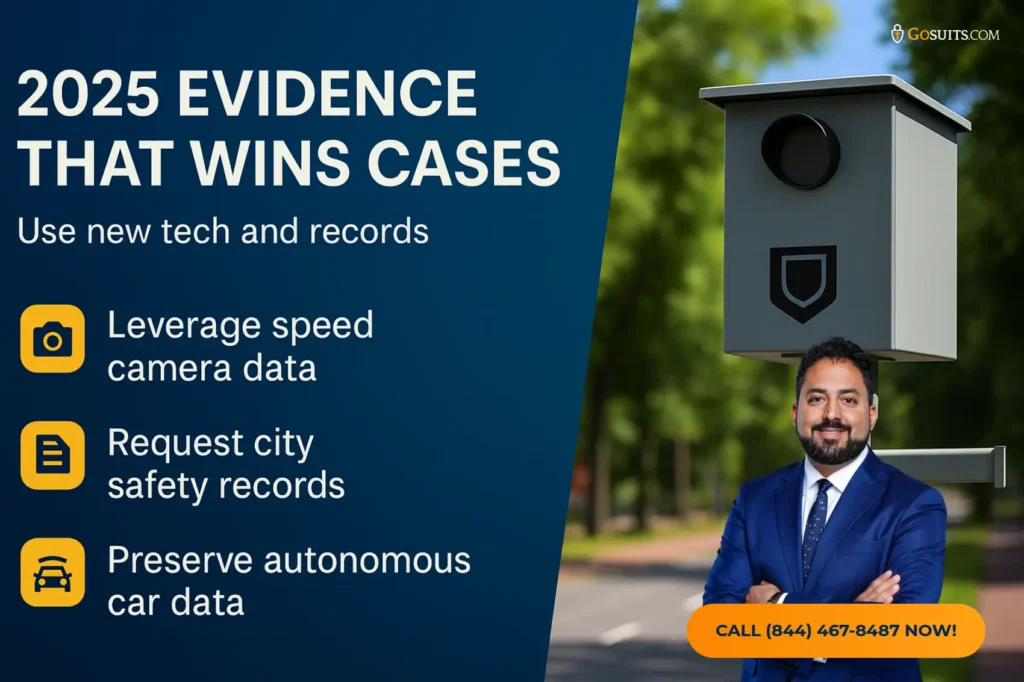
Other 2025-relevant safety themes:
- Urban pedestrian safety policies: Local ordinances in Los Angeles, San Francisco, Oakland, Long Beach, Glendale, San Jose, and San Diego often incorporate state Vehicle Code principles for crossings, yielding, and visibility. These local rules can affect how juries view reasonable care.
- Fleet and delivery vehicles: Companies operating in the Bay Area, Orange County, and the Inland Empire must monitor policy updates for loading zones, bike lane interactions, and school zone rules that elevate expected care standards in dense corridors.
For the broad safety context, national data show how speed and impairment contribute to severe outcomes. NHTSA reports that speeding has been a persistent factor, contributing to a substantial share of traffic fatalities in recent years, and that alcohol-impaired driving continues to be involved in a significant portion of fatal crashes. See NHTSA’s topic pages for Speeding and Impaired Driving for current statistics and analysis.
How do 2025 California laws affect auto insurance claims, negotiations, and civil litigation?
Key California rules that continue to shape 2025 claims and lawsuits include:
- Pure comparative fault: California allocates damages based on each party’s percentage of fault, even if a plaintiff is mostly at fault. See the California Supreme Court’s adoption of comparative negligence in Li v. Yellow Cab, 13 Cal.3d 804.
- Uninsured drivers’ limits on noneconomic damages: California Civil Code section 3333.4 restricts certain noneconomic damages in auto cases when the injured person was an uninsured driver at the time of the crash, with specific exceptions. Read the statute at the official code site (leginfo.legislature.ca.gov, Civil Code 3333.4).
- Government claims deadlines: If you may sue a public entity, you generally must present a government claim within six months for personal injury. See Government Code section 911.2 on the Legislature’s official site.
- Insurer duties and bad-faith framework: California’s Insurance Code includes unfair claim settlement practice provisions, but after Moradi-Shalal v. Fireman’s Fund, 46 Cal.3d 287, there is no private right of action under Insurance Code section 790.03(h). Claimants instead rely on common-law bad faith theories in appropriate first-party contexts and on third-party liability insurer duties to accept reasonable settlement opportunities.
- Duty to settle within limits: When liability is reasonably clear and damages likely exceed policy limits, insurers face a well-established duty to accept a reasonable settlement demand on behalf of their insured. See cases such as Comunale v. Traders & General, 50 Cal.2d 654, and related California Supreme Court authority discussing exposure for excess judgments.
Practical 2025 implications:
- Document everything: With new enforcement technologies and evolving local safety programs, photos, video, device data, and agency records can be more powerful than ever in proving or defending a claim.
- Expect more data discovery: Automated enforcement programs and mobility pilots may produce datasets that parties seek in discovery to establish speed patterns, notice, or foreseeability in collision locations.
- Early policy-limits strategy: Where injury is severe, communicating timely, complete settlement opportunities under California law remains critical for both sides to manage exposure.
What are the 2025 time limits to file California personal injury and wrongful death lawsuits?
Time limits matter just as much in 2025 as they did in prior years:
- General personal injury statute of limitations: Two years from the date of injury in most negligence cases. See Code of Civil Procedure section 335.1 on the Legislature’s site.
- Wrongful death statute of limitations: Typically two years from the date of death. Also grounded in section 335.1, with wrongful death claims authorized by Code of Civil Procedure section 377.60.
- Government claims: If a public entity may be liable, you generally must submit a government claim within six months for bodily injury or wrongful death, per Government Code section 911.2, before filing suit.
- Discovery rule exceptions: Certain claims may accrue when the injury or its cause is discovered or reasonably should have been discovered. Accrual and tolling can be complex, so it is important to get legal help quickly.
The safest course is to calculate the earliest possible deadline, track all administrative prerequisites, and keep written proof of submissions.
How do wrongful death and survival claims work in California in 2025, and who can sue?
California generally recognizes two distinct civil claims after a fatal incident:
- Wrongful death: Brought by eligible heirs to recover their losses, such as financial support and the value of household services. See Code of Civil Procedure section 377.60 for who may sue and what damages categories apply.
- Survival action: Brought by a decedent’s personal representative or successor in interest, seeking the decedent’s own claims that survive death under Code of Civil Procedure section 377.30. Section 377.34 governs which damages are recoverable in a survival action.
California’s Code of Civil Procedure section 377.34 has been updated in recent years to permit certain damages that previously were not permitted, subject to sunset provisions set by the Legislature. To confirm what is permitted for a case filed in 2025, read the current statute and any effective dates or sunset clauses on the official code page at leginfo.legislature.ca.gov.
Key practical points for families in Los Angeles County, Orange County, Riverside, San Bernardino, Alameda, Contra Costa, San Mateo, Santa Clara, and San Diego:
- Identify all potential heirs early and coordinate to avoid duplicative or barred claims.
- Open an estate or obtain appropriate authority to bring a survival claim.
- Calendar the two-year limitations period and any government claim deadlines if public entities are involved.
What do California DUI and street racing laws mean for civil liability in 2025?
Criminal statutes do not decide a civil case, but they supply standards of reasonable care and can support negligence per se arguments where a statute or ordinance was violated and the violation caused injury. Key Vehicle Code provisions include:
- DUI offenses: Vehicle Code sections 23152 and 23153 address driving under the influence and DUI causing injury. These provisions support negligence per se arguments when the violation is proven and causation is established. See the current Vehicle Code text at leginfo.legislature.ca.gov.
- Street racing and sideshows: Vehicle Code section 23109 prohibits speed contests and exhibitions of speed. Related provisions authorize vehicle impoundment in some circumstances. Violations may be relevant to fault allocation in civil suits.
National safety data continue to show the human impact of impairment and extreme speed, especially in urban corridors. NHTSA’s topic pages provide up-to-date statistics and analyses on impaired driving and speeding. This evidence can help explain foreseeability and risk to a jury.
How are pedestrians, cyclists, and micromobility treated under California law in 2025?
California’s Vehicle Code governs interactions with pedestrians and cyclists. Some recent legislative changes modernized jaywalking enforcement and safer passing rules in earlier sessions, while local governments in San Francisco, Oakland, Los Angeles, Long Beach, and San Jose continue to adopt policies for visibility, bike lanes, and traffic calming. For collision cases in 2025:
- Yielding and crosswalk rules: Vehicle Code provisions on crosswalks and yielding shape duties in pedestrian impact cases. Comparative negligence applies to all parties.
- Micromobility devices: E-bikes and scooters have specific operational rules and age or helmet requirements in the Vehicle Code. These statutes inform duties of care for riders and motorists alike.
- Local ordinances: City-level changes in the Bay Area and Southern California may affect speed limits in business districts, daylighting near intersections, or signage requirements, which become part of the facts for negligence and notice.
If a claim involves a public entity due to roadway design, signage, or signal timing, strict compliance with government claims procedures and careful investigation of design immunity defenses are essential.
Are autonomous vehicles addressed by California law in 2025 and how could that affect a claim?
Yes. The California DMV regulates testing and deployment of autonomous vehicles, including reporting requirements, disengagement data, and insurance or bond requirements. See DMV’s official autonomous vehicle program page for current regulations and permit holders: dmv.ca.gov.
Implications for 2025 civil cases in San Francisco, Los Angeles, San Diego, Oakland, and San Jose include:
- Parties and insurance: Depending on the scenario, the operator, permit holder, manufacturer, or a third-party contractor may be implicated. The regulatory framework helps identify the responsible entity and required financial responsibility.
- Data preservation: AVs generate operational data, video, and diagnostics. Early preservation requests and protective orders can be pivotal in catastrophic injury litigation.
- Standards of care: Regulations and permit conditions may inform breach of duty analysis. Expert testimony is typically required in complex AV cases to explain systems, perception, and handoff events.
How do California statutes and cases shape settlement strategy in 2025?
California’s settlement and litigation framework affects both plaintiffs and defendants:
- Section 998 offers to compromise: Code of Civil Procedure section 998 encourages settlement by shifting post-offer costs if the offeree fails to obtain a more favorable result at trial. Effective use of 998 offers requires careful timing and clarity in terms.
- Damages shaping by statute: Civil Code section 3333.4 may limit noneconomic damages for certain uninsured drivers in auto cases. This affects settlement valuation and trial strategy.
- Duty to settle and policy limits: California’s duty-to-settle jurisprudence, including Comunale and related cases, guides how insurers evaluate time-limited settlement demands. Clear documentation of liability, injuries, and damages is critical for both sides.
For plaintiffs, documenting losses with medical records, wage evidence, and life-care or vocational analyses supports demand letters. For defendants and insurers, early investigation, appropriate experts, and timely responses to reasonable offers are crucial to mitigate exposure.

What local differences across Southern California, the Bay Area, and the Central Valley could matter?
California’s statewide statutes apply everywhere, but local enforcement and roadway conditions vary by region:
- Los Angeles and Orange County: Dense traffic, school zones, and high pedestrian activity mean more cameras, crossing protections, and local programs that may produce useful records. Collisions near transit corridors often involve multiple agencies.
- Bay Area (San Francisco, Oakland, San Jose, Alameda, Contra Costa, San Mateo): Urban street design pilots and AV deployments create distinct evidentiary trails, including agency studies and company reporting.
- Inland Empire (Riverside, San Bernardino): Higher-speed arterial roadways and freight traffic change how speed, stopping distance, and sightlines are evaluated during reconstruction.
- Central Valley (Fresno, Bakersfield): Agricultural and trucking activity can raise unique questions on commercial policies, maintenance, and hours-of-service compliance under federal and state regulations.
How should defendants and insurers adapt to 2025 legal updates in California civil cases?
Defendants and insurers facing claims in California’s 2025 landscape should consider:
- Policy-limit demand protocols: Implement review checklists keyed to California duty-to-settle standards to triage time-limited tenders with adequate speed and documentation.
- Data retention: Preserve telematics, dashcam, driver logs, and any automated enforcement interactions. Spoliation risks are heightened where new technologies are involved.
- Local counsel coordination: City-level pilots and local ordinances may affect exposure. Collaborate with California trial counsel on venue-specific rules in Los Angeles, San Francisco, and San Diego courts.
What 2025 FAQs come up about evidence, damages, and California court procedure?
How do California courts treat comparative fault in 2025?
California remains a pure comparative fault state under Li v. Yellow Cab. Juries allocate percentages of responsibility to each party, and a plaintiff’s recovery is reduced by their percentage of fault.
What evidence can help or hurt my car accident case?
Useful evidence in 2025 includes crash scene photos and video, vehicle EDR data, phone or telematics data, business surveillance, witness statements, and any official records. Where a location falls within a speed safety pilot, administrative records may corroborate site conditions or speed patterns. California Evidence Code and case law govern admissibility.
What deadlines apply after a crash with a city, county, or state vehicle?
California’s Government Claims Act requires timely claims as a prerequisite to suing a public entity. For bodily injury or wrongful death, a claim generally must be presented within six months. See Government Code section 911.2 on the Legislature’s official site for current text and exceptions.
Do criminal charges control civil outcomes?
No. Criminal cases and traffic tickets are separate. However, violations of safety statutes can support negligence per se in civil litigation if the violation and causal link are proven. DUI and illegal street racing statutes in the Vehicle Code are often central in serious-injury cases.
Are there caps on pain and suffering damages in 2025?
California does not impose a general cap on noneconomic damages in ordinary negligence cases arising from vehicle crashes. Some statutes limit noneconomic damages in particular contexts, such as Civil Code section 3333.4 for certain uninsured drivers in auto cases. Always verify the latest statutory language.

How big is the roadway injury problem and why does it matter to my case?
Nationally, speeding and alcohol impairment remain significant contributors to fatal crashes, according to NHTSA’s topic analyses on speeding and impaired driving. These data help explain risk and foreseeability when presenting a California case to a jury or claims professional. Public health sources like the CDC also provide data on the health and economic toll of crash injuries (cdc.gov).
How can GoSuits help with a 2025 California injury, car accident, or wrongful death case?
If you or a loved one is navigating a 2025 California injury, car crash, or wrongful death claim in Los Angeles, San Diego, San Jose, San Francisco, Sacramento, Orange County, Riverside, San Bernardino, Fresno, Long Beach, Oakland, Bakersfield, Santa Ana, Anaheim, Irvine, Ventura, San Mateo, Contra Costa, Alameda, or anywhere in Southern or Northern California, having a dedicated injury attorney can make a meaningful difference in protecting your rights and building the strongest record possible.
At GoSuits, our practice is built for complex injury litigation and attentive client care. Here is how we support you from day one:
- Availability and communication you can count on:
- Available 24/7 for immediate free consultations. When a collision happens at night or on a weekend, you can reach us.
- We provide multilingual customer service, with round-the-clock Spanish and Farsi speakers, and access to additional languages as needed for your family and witnesses.
- We assign a responsive case team and keep you informed at each step via phone, text, secure email, or portal updates. Your questions get real answers quickly.
- Fee policies and cost transparency focused on your recovery:
- No win, No Attorney Fees for qualifying cases, so you can focus on medical care and family needs.
- No hidden administrative fees. We discuss costs at the outset and confirm them in writing so there are no surprises.
- Tools and workflow designed to move faster and build leverage:
- We use a proprietary personal injury software platform developed for our internal use. It streamlines investigation, medical record organization, expert engagement, demand preparation, settlement negotiations, litigation filing, and discovery management.
- The goal is to stay ahead of insurers’ timelines, keep evidence organized, and reduce delays that can weaken claims.
- Experience and track record across severe injury litigation:
- 30 years of combined experience focusing on serious injury and wrongful death litigation in California, Texas, and Illinois.
- We have litigated more than 1,000 cases, with settlement and verdict results published here: gosuits.com/prior-cases.
- For product liability, 18-wheeler and commercial vehicle crashes, brain injury, spinal injury, and other complex matters, we retain qualified experts in the state to address liability, accident reconstruction, biomechanics, and damages.
- Awards and recognitions include listings by TopVerdict for significant settlements and verdicts in multiple U.S. counties, Top 100 Settlement in Texas, National Trial Lawyers Top 40 Under 40 for Sean Chalaki, recognition by Best Lawyers in 2023, 2024, and 2025, and selections to Super Lawyers since 2021.
- Personalized, not a volume firm:
- We limit the number of cases we accept so our attorneys can focus on strategy, evidence development, and clear communication.
- You work with a real trial team. We prepare every case as if it may go to court to strengthen your negotiation position.
- How we add value in 2025 California cases:
- We identify every applicable deadline, including the two-year limitations period and any Government Code claims. We prepare and file required pre-lawsuit claims against public entities where applicable.
- We preserve and analyze modern data sources: EDR, telematics, business cams, mobile device logs, and where relevant, records related to speed safety pilots or AV operations.
- We build damages with credible medical documentation, wage and career analyses, and, when warranted, life-care planning. We coordinate liens and benefits to maximize net recovery.
- We structure settlement offers and time-limited demands consistent with California law to position your case for a fair resolution or trial.
Where we practice and our nearest office:
- We litigate severe injury and complex cases in California, Texas, and Illinois. In California, we handle cases throughout Los Angeles County, Orange County, San Diego County, the Bay Area, the Inland Empire, Ventura County, and the Central Valley. Contact us to be connected with the nearest office location for your area.
You do not have to navigate 2025 California legislative changes, complicated insurance rules, or evolving traffic-safety programs alone. A free, no-obligation consultation is available any time. We will listen, explain the process in plain language, and help you decide the next steps that fit your situation.
Where can you read the primary sources for these 2025 California legal updates?
- California Legislative Information:
- Bill search and current California Codes: https://leginfo.legislature.ca.gov/
- Selected statutes mentioned:
- Code of Civil Procedure sections 335.1, 377.30, 377.34, 377.60, 998
- Civil Code section 3333.4
- Government Code section 911.2
- Vehicle Code sections 23152, 23153, 23109 and related provisions
- California DMV Autonomous Vehicles:
- Testing and deployment regulations and permits: https://www.dmv.ca.gov/portal/vehicle-industry-services/autonomous-vehicles/
- Judicial Council of California:
- California Rules of Court and resources: https://www.courts.ca.gov/rules
- Court opinions and research:
- Li v. Yellow Cab, 13 Cal.3d 804 (comparative fault): courtlistener.com
- Comunale v. Traders & General Ins. Co., 50 Cal.2d 654 (duty to settle): courtlistener.com
- Moradi-Shalal v. Fireman’s Fund, 46 Cal.3d 287 (Insurance Code 790.03): courtlistener.com
- Scholarly and opinion search: scholar.google.com
- National safety and public health context:
- NHTSA on Speeding: https://www.nhtsa.gov/risky-driving/speeding
- NHTSA on Impaired Driving: https://www.nhtsa.gov/risky-driving/drunk-driving
- CDC Transportation Safety: https://www.cdc.gov/transportationsafety/index.html
Note: For any pending 2025 California bills, always confirm the latest text, status, and effective date at leginfo.legislature.ca.gov. If a reliable source is not available for a claim, we do not cite it.
